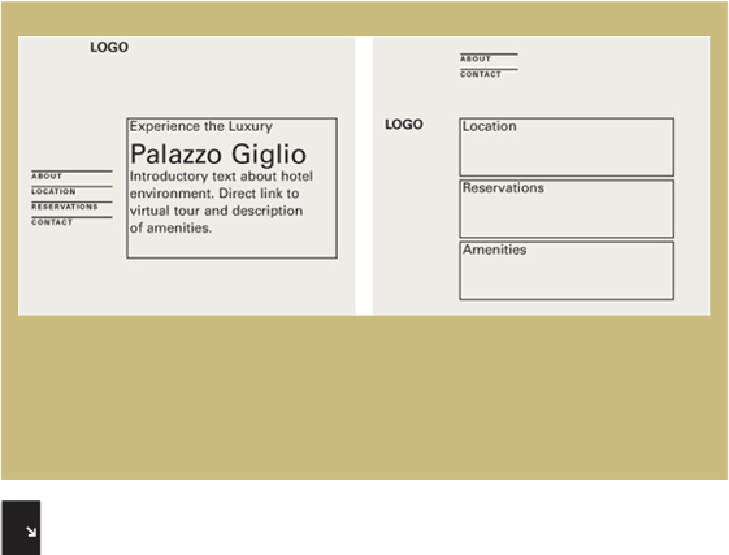Graphics Reference
In-Depth Information
Sorting the same content in different ways might call attention to specific parts over others and
thereby affect the emphasis of these specific parts. Whether the content is a website or a printed
brochure or topic, convention generally dictates that material that comes first should be assumed
to have greater significance. Adjusting the order to create a narrative flow that enhances focus on
specific content changes the experience, as seen here in these hypothetical examples: alternate op-
tions for a hotel's website navigation, shown as wireframe models for the home page.
Structure: The Grid System
All design work involves problem solving on both visual
and organizational levels. Pictures, fields of text, headlines, and tabular data: all these
pieces must come together to communicate. A grid is simply one approach to achieving
this goal. Grids can be loose and organic, or they can be rigorous and mechanical. To
some designers, the grid represents an inherent part of the craft of designing, the same
way joinery in furniture making is a part of that particular craft. The history of the grid
has been part of an evolution in how graphic designers think about designing, as well
as a response to specific communication and production problems that needed to be
solved. Among other things, a grid is suited to helping solve communication problems
of great complexity. The benefits of working with a grid are simple: clarity, efficiency,
economy, and continuity. Before anything else, a grid introduces systematic order to a
layout, helps distinguish between various types of information, and eases a user's nav-
igation through them. Using a grid permits a designer to lay out enormous amounts of
information in substantially less time because many design considerations have been
addressed in building the grid's structure. The grid also allows many individuals to col-


